How To Be Hardcore
Thoughts on pain, suffering and endurance from the author of “Running on Empty”
Story and Photos by Marshall Ulrich

Rugged. Tough. Badass. Able to withstand discomfort, difficulty, pain and perturbation. Capable of suffering without letting it stop you.
That’s what being hardcore is, right? Putting up with whatever you must in order to achieve the thing you want to achieve. We’ve all had our moments, but the truth is that even the most hardy of us can take it up a notch. Not that I think suffering for its own sake is the point. It must have a purpose.
I’ve always seen endurance as a means to an end, a way of squeezing every last ounce out of life, a way to see more, experience more, accomplish more, live more. So, yes, I’ve been willing to deal with discomfort for long periods of time — spending hours squeezing through caves so tight they felt suffocating, during a week-long adventure race near Lake Tahoe close to the small town of Pioneer; running nearly 600 miles during the hottest months in Death Valley; climbing the highest mountains on earth and enduring the muscle wasting and mental impairment of extreme altitudes.
Some people consider me a king of pain, yet I’ve been schooled a few times.
On my way to the top of Mount Everest in 2004, I was fulfilling a childhood dream, but at our 17,000-foot base camp, I was also going stir crazy, having to spend days in my tent alone, just laying there on my back, unable to sleep, oxygen-deprived, contemplating my existence. Those were my most difficult moments on the Great Mountain, feeling like a caged animal. It drove me nuts!
Yet the real hard-core lesson came from the Russian National Climbing team, who were attempting a never-done-before North Face route without oxygen, without help from Sherpas. They’d carry heavy equipment to their high camp at the base of Everest below the North Face and go up to set hardware and rope over the course of a couple of weeks.
These guys were serious; in my opinion, they’re the best mountaineers in the world. In case you don’t know already, the last 3,000 feet of the North Face is vertical rock — unbelievably tough! And they demanded that everyone on the team pull his weight, meaning not only that he had to do the work, but that he had to keep his mouth shut about it. One young climber mentioned, once, during an ascent to 27,000 feet, that his hands were cold, and they told him he was off the team. That was it. Game over. Go home.
Lesson 1. Part of suffering with purpose is not bitching about it.
Growing up on a dairy farm in Colorado, I’d learned something from my dad about keeping any complaints to myself. You just didn’t question whether you could go out and stand on the back of a tractor sled and stack hay all day. Instead, it was a question of how many 70-pound bales you could put up. By the time we were in our teens, my brother and I considered it a contest, and we’d usually get a couple hundred bales loaded in an hour, totaling about 2,000 for the day.
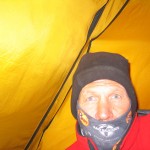
Dad also taught me that you don’t let pain get in your way. Once I cut myself on a piece of machinery, and I probably should have gotten some stitches or something, but he took me to a bucket of disinfectant that we used to cleanse the milk lines, washed off the blood and sent me inside for a bandage.
“Get that wrapped up, then come on back out here. We’ve still got more to do.”
Dad didn’t coddle, that’s for sure. And that included himself. Late in life, when he had prostate cancer, he told no one except my mother and never griped about any of it, even to her. She had to trick him into going to the hospital when things got really bad for him, pretending to drive him to work and detouring to the medical center in northern Colorado. A few days later he died, content with what he’d done with his life. Yes, for Dad, there was always work to do, and that came first.
Some experts refer to quality runners as being good because of their ability to deal with hardship. It’s a skill, like riding a bike or swimming. And since it’s a skill, you can get better at it: You can develop your tolerance and more sophisticated ways of coping. Each new experience of endurance gives you greater confidence and competence in suffering with purpose.
One of my heroes is Yiannis Kouros, the greatest ultrarunner alive. When I had a chance to meet him in 2005, we talked about this weird experience I had once, where it felt like I’d left my body. It was as if I’d hovered over myself, devoid of pain, about 60 miles into the Badwater Ultramarathon. Was I hallucinating? It didn’t seem like it. (I had plenty of experience with that, as I’ve done plenty of racing in a sleep-deprived state. But this seemed different.) I wanted to know if this had ever happened to him.
All the time, he said. This happens when you’ve kept going beyond your breaking point, when your body is in such pain that the mind can’t overcome it any longer, so it slips out to another place, and the body keeps going. He considers this a supreme experience, even a spiritual one. For Yiannis, ultrarunning is about transcendence.
Lesson 2. You can transcend the pain.
Transcendence can take many forms, including the experience of beauty, joy, laughter, or hope in the midst of suffering. It’s not always some kind of out-there event; that happened to me only that one time. And it’s not always about checking out, as with hallucinations. More often, I’ve been in the middle of some hellish scene, like the raw, rocky mileage at the Western States 100, and then suddenly checked in and been able to pay attention to my surroundings in a different way: that race was my first introduction to intense, prolonged discomfort and also to the incredibly beautiful terrain of the Sierra Nevada.
Transcendence can also be about something more primal. Once when I was in the desert below the Eastern Sierra, I spotted some horses that were staring back at me near Lone Pine. I was in the final stages of completing the first successful, unaided, self-contained crossing of Death Valley and ascension of Mount Whitney, 146 miles altogether. Because my aim was to do it entirely without support from other people, I was pulling a cart with my supplies in it, a modified baby jogger with a cooler strapped to it and filled with water, food, and medical supplies. At the start, it had weighed more than 200 pounds and was hard to pull even at a walk. I was averaging 16-minute miles in the intense heat (110 to 128 degrees in the shade) for 15 hours. After that, as I headed up the 18 miles on Townes Pass, I was to repeat a slow and agonizing pattern: pull the cart up the steep grade for three-quarters of a mile, drop to the ground to rest on my back for five minutes, stand up, grab the cart, and do it all over again.
So, when I saw those horses looking at me, I had a kind of revelation: I could see myself through their eyes, a fellow beast of burden, an animal walking this planet for but a short time. It was as if a wall fell. For the first time in my life, I knew and felt the bondage of the servant animals and the important role they’ve played in increasing the quality of human lives.
That moment taught me how united we all are in spirit, none better than the other, none worse. It also made me acutely aware of how presumptuous I’d been in the past, reaching pridefully toward my ideal of perfection. It was clear to me then what a short distance I had covered and what a marvelously long way I had yet to go.
Lesson 3. It’s not a “dark art”; suffering can be enlightening.
Perhaps that was the beginning of it for me, the realization that my suffering connects me with others. Empathy for a herd of horses morphed into compassion for people around the world who suffer, not by choice, but by their circumstances. This is why, whenever I do one of these tests of my endurance now, it’s important to me that whatever I endure must mean something. It must alleviate someone else’s suffering. Don’t get me wrong; I’m not saying that I’m a martyr or anything like that. It’s just that it’s important to me not only to be the guy who can take it, not only the guy who can get something out of it, but also the guy who gives something too. The purpose of my suffering has become something bigger than me, as much about compassion and contribution as achieving a goal. This also feeds my motivation to finish; in times when I feel like giving up, I reach for my

commitment to the people who will benefit from the money I’m raising. I think about what it will mean in their lives, and I’m able to keep going. We help eachother in that way. _______________________________________________________
“One of the great lessons of suffering may seem paradoxical: you must be kind to yourself.”
_______________________________________________________
Perseverance is about scoring a victory over the difficulty, pain, or discomfort that you choose to endure for the sake of your sport and the personal rewards you get out of it. But you can’t “attack” suffering as if it were your competitor; to win this one, you have to accept it. This means recognizing that you made a choice, swallowing your complaints, and finding a higher purpose for what you’re doing. It requires that you transcend the physical, have confidence that you’ll succeed, know that there will be an end, and take quitting off the table. In doing all this, you prove to yourself that the only limits are in your mind. You discover what you’re made of. It’s more than you think, no matter your past, your genetics, your gender, or your age.
My greatest test of endurance was, by far, my run across the United States in 2008, when I was 57 years old. I was attempting to break a record set by a man half my age. Initially, I committed to running 70 miles a day, covering a distance on foot greater than most people drive to and from work.
Although we started in San Francisco on a cold fall morning, by the time we reached the Sierra Nevada the heat was intense, with temps in the high 90s on many days. Not only that, but I’d started having nightmares and, of course, my body was feeling beaten up by the extreme daily distance on unforgiving pavement. In Delta, Utah, I’d had to stop for treatment of plantar fasciitis, and in my home state of Colorado, I was also diagnosed with a tear in a tendon in my foot. These two injuries, more than any other obstacles, plagued me for the remaining thousands of miles. At one point, I chose to deal with the increasing pain by disowning my foot, declaring to myself that it was no longer of any concern to me. Whenever I noticed what was happening down there at the end of my leg, I averted my mind and just thought about something else.
Even with all of that, the landscapes during this part of the run were incredible. They made daydreaming and escaping into a fantasy world of farmers and pioneers, prospectors and miners, town sheriffs and saloon gals, not just possible but easy. We ran through ghost towns and more modern places that had grown up around the outposts of the Old West. And in between were sprawling cattle ranches, orchards, and quaint farms that left me melancholy, thinking about my childhood.
Yet 70 miles a day proved impossible to keep up. Running that far left too few hours to sleep (4 hours turned out to be the minimum I needed to perform), and the pounding of even an extra 10 miles over 60 led to breakdowns in my body. Ultimately, I did go on to complete all 3,063.2 miles, doing an average of close to 60 miles a day and finishing in New York on (coincidentally) Election Day in 2008 to set new trans-American records for the Masters and Grand Masters divisions. Not bad for a card carrying member of AARP.
One of the great lessons of suffering may seem paradoxical: you must be kind to yourself. Know when to rest and how much. Know when you can push to the finish. All the while, realize that you have the strength to go farther than you ever have before.
As T. S. Eliot is reported to have said, “Only those who will risk going too far can possibly find out how far they can go.”
_________________________________________________________________________________________
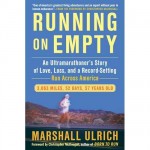 For more extreme adventures and the rest of his transcontinental run story, read Marshall Ulrich’s new book, Running on Empty: An Ultramarathoner’s Story of Love, Loss, and a Record- Setting Run Across America (Avery, 2011).
For more extreme adventures and the rest of his transcontinental run story, read Marshall Ulrich’s new book, Running on Empty: An Ultramarathoner’s Story of Love, Loss, and a Record- Setting Run Across America (Avery, 2011).
Marshall Ulrich defies the ideas of “too old,” “too far,” and “not pos- sible.” A versatile, world-class extreme endurance athlete, he’s an ultrarun- ner, Seven Summits mountaineer, and adventure racer. Marshall’s prolific athletic career has earned him numerous wins, records, and firsts on some of the toughest courses in the world and taken him to the top of the highest mountains, including Mount Everest, all in his forties and fifties.
Also a speaker, trainer, and guide with his company, Dreams in Action, Marshall delivers keynotes punctuated by extreme adventure stories and the inspiration to “discover what you’re made of—it’s
more than you think”; leads run- ning camps that serve every level of athlete; and guides expeditions through extreme environments and on the world’s great mountains.
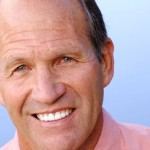



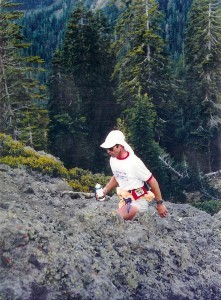







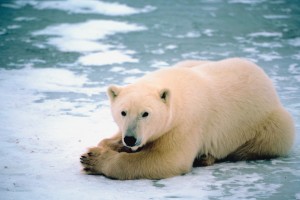
[…] post was inspired by yet another Marshall Ulrich material – an interview with him. ( by the way, if you buy his new book, ‘Running on Empty’, send it to me when […]
marshall, i just found you through the internet. you are very inspiring person to me. i started running 2003 and run everyday , where ever i go…it’s my passion, and one day i was dreaming of running across the nation….i was so blessed , when i read your story of running from coast to coast……i wanted to do that and so anxious to run…..you gave me so much high spirit, that someday i will conquer the road…..i’m 54 yrs. old now, but from the time i run , never thought of my age anymore……may jesus use you, to his purpose………god bless you….rainier layug
Hi Rainer, Thanks for your comments. We find Marshall Ulrich to be pretty darn inspiring as well! I’m glad you were able to find him on our site. In case you haven’t already found it, here is a direct link to his site, http://marshallulrich.com/ Enjoy the run!
I WANT TOO BE PAT